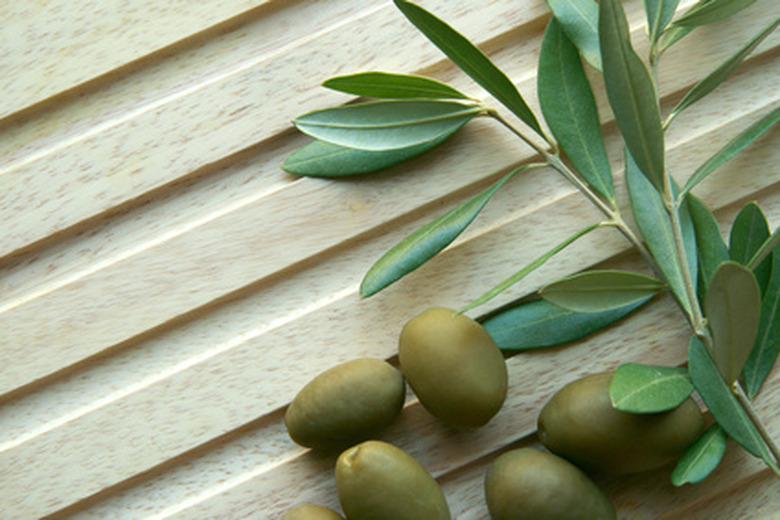Facts About Olive Tree Flowers
Since ancient times, olives have been treasured for their savory fruits, which also produce oil valued for cooking and fuel. Before the formation of tasty, jet black fruits, however, olive trees develop flowers, from which olives form. The olive flower is distinct in its appearance, growth requirements and reproductive habits.
Function
Olives originate as flowers, and the flowers' chief purpose is to ensure the successful production of seeds. Olive flowers produce pollen containing male sex cells, while other flowers house female structures that, when fertilized, will develop into seeds, the hard pits found inside of olives. The edible part develops as a fleshy covering called the pericarp or fruit coat. After eating the fruit, animals excrete or discard the seeds, which germinate into new olive trees.
- Since ancient times, olives have been treasured for their savory fruits, which also produce oil valued for cooking and fuel.
- Olive flowers produce pollen containing male sex cells, while other flowers house female structures that, when fertilized, will develop into seeds, the hard pits found inside of olives.
Description
Olive tree flowers grow in large clusters on stems arising from the branches. The flowers are small, cream-colored and very fragrant. Although olive tree flowers may linger for months after first blossoming in April, they may not be obvious features of the tree because they are hidden by the tree's evergreen leaves.
Pollination
Olive trees contain two types of flowers: perfect and staminate. Staminate flowers contain only the pollen-producing male structures. Because they lack the female structures, staminate flowers are unable to produce fruit. Perfect flowers contain both male and female structures. Perfect flowers can self-pollinate or receive pollen from another flower or tree, and when pollinated, perfect flowers develop into olive fruits. Although bees and other insects do help to pollinate olive flowers, most pollen is carried by the wind, or perfect flowers self-pollinate, transferring pollen from the male structures onto neighboring female structures.
- Olive tree flowers grow in large clusters on stems arising from the branches.
- Because they lack the female structures, staminate flowers are unable to produce fruit.
Fruit
When a perfect olive flower is pollinated, a thin pollen tube extends into the base of the flower and releases sperm. At the base of the flower lies the ovary, containing a single egg cell. Once fertilized, a hard shell forms around the fertilized egg–the seed–and the olive fruit forms around it. Olive flowers produce drupes, fruits containing a single hard seed, similar to peaches.
Temperature
In order to produce flowers–and, therefore, fruit–olive trees require very specific temperature conditions. Olive trees are subtropical trees and cannot survive below-freezing temperatures. However, unlike many other fruit trees, olive trees do not produce flower buds in the autumn but require exposure to cooler winter temperatures at night, coupled with warm daytime temperatures. Olive trees will flower only when these specific requirements are met. Furthermore, olive trees will not flower before 5 years of age.
- When a perfect olive flower is pollinated, a thin pollen tube extends into the base of the flower and releases sperm.
- However, unlike many other fruit trees, olive trees do not produce flower buds in the autumn but require exposure to cooler winter temperatures at night, coupled with warm daytime temperatures.
